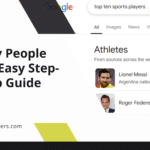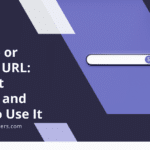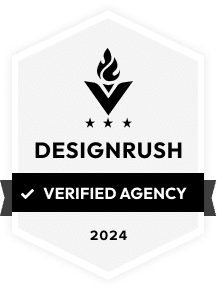
|
Getting your Trinity Audio player ready...
|
Search Engine Optimization (SEO) is a crucial aspect of digital marketing that website owners need to understand and implement. In today’s digital age, having a strong online presence is essential for businesses and individuals alike. SEO helps improve the visibility and ranking of a website in search engine results, which in turn drives organic traffic and increases the chances of conversions. By optimizing their websites for search engines, website owners can ensure that their content reaches the right audience and achieves its intended goals.
Key Takeaways
- SEO is important for your website’s visibility and ranking on search engines
- Keyword research helps you optimize your content for relevant search terms
- Engaging and relevant content is crucial for attracting and retaining your audience
- On-page optimization includes elements like title tags, meta descriptions, and internal linking
- Building high-quality backlinks from reputable sources can improve your website’s authority and ranking
Understanding the Basics of SEO and Its Importance for Your Website
SEO refers to the process of optimizing a website to improve its visibility and ranking in search engine results pages (SERPs). When users search for specific keywords or phrases related to a website’s content, search engines like Google, Bing, and Yahoo use complex algorithms to determine the most relevant and authoritative websites to display. By implementing SEO strategies, website owners can increase their chances of appearing higher in the SERPs, making it more likely for users to click on their website.
The importance of SEO cannot be overstated. With millions of websites competing for attention on the internet, it is crucial for website owners to optimize their content to stand out from the crowd. Without proper SEO, even the most well-designed and informative websites may go unnoticed by search engines and potential visitors. By investing time and effort into SEO, website owners can improve their website’s visibility, drive organic traffic, and ultimately achieve their business goals.
To understand the importance of SEO, it is essential to have a basic understanding of how search engines work. Search engines use bots or spiders to crawl websites and gather information about their content. This information is then indexed and stored in a massive database. When a user enters a search query, the search engine retrieves relevant results from its database based on various factors such as keyword relevance, website authority, user experience, and more. SEO helps website owners optimize their websites so that search engines can easily crawl, index, and understand their content, increasing the chances of appearing in relevant search results.
Conducting Keyword Research to Optimize Your Content
Keyword research is a fundamental aspect of SEO that involves identifying the most relevant and valuable keywords for your website’s content. Keywords are the words or phrases that users enter into search engines when looking for information, products, or services. By targeting the right keywords, website owners can ensure that their content appears in front of the right audience.
There are several tools available for conducting keyword research. Google Keyword Planner is a popular choice as it provides insights into keyword search volume, competition, and related keywords. Other tools like SEMrush and Moz Keyword Explorer offer similar features and can help website owners identify valuable keywords for their content.
When choosing keywords for your content, it is important to consider relevance, search volume, and competition. Relevance refers to how closely a keyword aligns with your content and target audience. Search volume indicates how many people are searching for a particular keyword each month. High search volume keywords may have more competition, making it harder to rank for them. It is important to strike a balance between relevance and search volume when selecting keywords for your content.
Creating Engaging and Relevant Content for Your Audience
| Metrics | Description |
|---|---|
| Pageviews | The number of times your content has been viewed on your website. |
| Time on Page | The amount of time visitors spend on your content page. |
| Bounce Rate | The percentage of visitors who leave your website after viewing only one page. |
| Shares | The number of times your content has been shared on social media. |
| Comments | The number of comments left on your content page. |
| Click-Through Rate | The percentage of visitors who click on a link within your content. |
| Conversion Rate | The percentage of visitors who take a desired action on your website, such as filling out a form or making a purchase. |
High-quality content is crucial for SEO as it not only attracts visitors but also keeps them engaged and encourages them to take action. When creating content for your website, it is important to focus on providing value to your audience. By offering informative, engaging, and relevant content, you can establish yourself as an authority in your industry and build trust with your audience.
To create engaging and relevant content, consider the following tips:
1. Understand your target audience: Before creating content, it is important to understand who your target audience is and what they are looking for. Conduct market research, analyze your competitors’ content, and gather insights from your existing audience to gain a better understanding of their needs and preferences.
2. Use a variety of content formats: Different people prefer consuming content in different formats. By diversifying your content formats, such as blog posts, videos, infographics, and podcasts, you can cater to a wider audience and keep them engaged.
3. Incorporate visuals: Visual elements such as images, videos, and infographics can make your content more engaging and memorable. They can also help break up text and make it easier to consume.
4. Optimize for readability: Make sure your content is easy to read and understand. Use clear headings, subheadings, bullet points, and short paragraphs to improve readability. Also, consider using relevant keywords naturally throughout your content to improve its SEO.
5. Provide actionable takeaways: Your content should provide actionable takeaways that your audience can implement in their own lives or businesses. By offering practical advice and solutions, you can establish yourself as a valuable resource and encourage repeat visits.
Optimizing Your Website’s On-Page Elements for Better SEO
On-page SEO refers to the optimization of various elements on a website to improve its visibility and ranking in search engine results. By optimizing these elements, website owners can send signals to search engines about the relevance and quality of their content.
Some key on-page elements that should be optimized for better SEO include:
1. Title tags: The title tag is an HTML element that specifies the title of a web page. It is displayed as the clickable headline in search engine results. Each page on your website should have a unique and descriptive title tag that includes relevant keywords.
2. Meta descriptions: The meta description is a brief summary of a web page’s content that appears below the title tag in search engine results. It should be concise, compelling, and include relevant keywords to entice users to click on your website.
3. Header tags: Header tags (H1, H2, H3, etc.) are HTML elements that define the headings and subheadings on a web page. They help structure your content and make it easier for search engines to understand. Include relevant keywords in your header tags to improve SEO.
4. URL structure: The URL structure of your web pages should be clean, descriptive, and include relevant keywords. Avoid using long and complex URLs that are difficult for users and search engines to understand.
5. Image optimization: Images on your website should be optimized for SEO by using descriptive file names and alt tags. This helps search engines understand the content of the images and improves the accessibility of your website.
Building High-Quality Backlinks to Your Website

Backlinks are links from other websites that point to your website. They are an important factor in search engine algorithms as they indicate the authority and relevance of a website. Building high-quality backlinks can significantly improve your website’s visibility and ranking in search engine results.
To build high-quality backlinks, consider the following tips:
1. Create valuable content: The best way to attract backlinks is by creating valuable and shareable content. When you provide valuable information or insights, other websites are more likely to link to your content as a reference or resource.
2. Guest blogging: Guest blogging involves writing articles for other websites in your industry. By contributing high-quality content to reputable websites, you can earn backlinks and increase your website’s visibility.
3. Outreach and networking: Reach out to other website owners, bloggers, influencers, and industry experts in your niche. Build relationships with them and offer to collaborate on content or provide guest posts. This can lead to opportunities for backlinking.
4. Monitor mentions: Keep track of mentions of your brand or website on the internet. If someone mentions you without linking back to your website, reach out to them and request a backlink.
5. Avoid spammy tactics: Avoid using spammy tactics such as buying backlinks or participating in link schemes. These practices can harm your website’s reputation and result in penalties from search engines.
Leveraging Social Media to Boost Your SEO Efforts
Social media can have a significant impact on SEO by increasing brand visibility, driving traffic to your website, and generating social signals that search engines consider when ranking websites. By leveraging social media effectively, website owners can enhance their SEO efforts and reach a wider audience.
To leverage social media for SEO, consider the following tips:
1. Share your content: Share your website’s content on social media platforms to increase its visibility and reach. Encourage your followers to share your content with their networks, which can lead to more backlinks and traffic.
2. Engage with your audience: Social media provides an opportunity to engage with your audience directly. Respond to comments, answer questions, and participate in discussions to build relationships and establish yourself as an authority in your industry.
3. Optimize your social media profiles: Optimize your social media profiles by including relevant keywords in your bio, description, and posts. This can help improve the visibility of your profiles in search engine results.
4. Use hashtags strategically: Hashtags can help increase the discoverability of your content on social media platforms. Research relevant hashtags and use them strategically in your posts to reach a wider audience.
5. Monitor social signals: Social signals such as likes, shares, comments, and followers can indicate the popularity and relevance of your content. Monitor these signals and use them as feedback to improve your content and SEO strategies.
Ensuring Your Website is Mobile-Friendly and Responsive
With the increasing use of mobile devices for internet browsing, having a mobile-friendly and responsive website is crucial for SEO. Search engines prioritize mobile-friendly websites in their rankings as they provide a better user experience for mobile users.
To ensure your website is mobile-friendly and responsive, consider the following tips:
1. Use a responsive design: A responsive design automatically adjusts the layout and content of your website to fit different screen sizes and devices. This ensures that your website looks and functions well on desktops, tablets, and smartphones.
2. Optimize page loading speed: Mobile users have less patience for slow-loading websites. Optimize your website’s loading speed by compressing images, minifying code, and using caching techniques.
3. Use mobile-friendly fonts and buttons: Choose fonts that are easy to read on small screens and ensure that buttons and links are large enough to be easily tapped with a finger.
4. Test your website on different devices: Test your website on various devices and screen sizes to ensure that it looks and functions well across different platforms.
5. Implement AMP (Accelerated Mobile Pages): AMP is a framework that allows you to create fast-loading mobile web pages. Implementing AMP can significantly improve your website’s performance on mobile devices.
Analyzing Your Website’s Performance with a Reliable SEO Checker
Analyzing your website’s performance is essential for understanding how well your SEO strategies are working and identifying areas for improvement. SEO checkers are tools that provide insights into various aspects of your website’s performance, such as keyword rankings, backlinks, site speed, and more.
To analyze your website’s performance with an SEO checker, consider the following tips:
1. Choose a reliable SEO checker: There are many SEO checkers available, ranging from free tools like Google Analytics to paid tools like SEMrush and Moz. Choose a tool that suits your needs and provides accurate and comprehensive data.
2. Monitor keyword rankings: Track the rankings of your target keywords to see how well your website is performing in search engine results. Identify keywords that are performing well and those that need improvement.
3. Analyze backlinks: Use an SEO checker to analyze your website’s backlink profile. Identify high-quality backlinks and opportunities for building new ones. Also, monitor for any spammy or low-quality backlinks that may be harming your website’s SEO.
4. Check site speed and performance: Site speed is an important factor in SEO. Use an SEO checker to analyze your website’s loading speed and performance. Identify any issues that may be affecting your website’s speed and take steps to optimize it.
5. Monitor user behavior: Analyze user behavior metrics such as bounce rate, time on page, and conversion rate to understand how users are interacting with your website. Use this data to improve user experience and optimize your content.
Identifying and Fixing Common SEO Issues on Your Website
Common SEO issues can negatively impact your website’s visibility and ranking in search engine results. It is important to identify and fix these issues to ensure that your website is optimized for search engines.
Some common SEO issues include:
1. Duplicate content: Duplicate content refers to identical or very similar content that appears on multiple pages of a website or across different websites. Search engines may penalize websites with duplicate content as it can confuse users and affect the overall user experience.
2. Broken links: Broken links are links that lead to non-existent or inaccessible pages. They can negatively impact user experience and make it difficult for search engines to crawl and index your website.
3. Missing meta tags: Meta tags such as title tags and meta descriptions provide important information about a web page’s content to search engines. Missing or poorly optimized meta tags can affect your website’s visibility in search engine results.
4. Poor URL structure: URLs that are long, complex, or contain irrelevant information can negatively impact SEO. A clean and descriptive URL structure helps search engines understand the content of your web pages.
5. Slow page loading speed: Slow-loading web pages can frustrate users and lead to higher bounce rates. Search engines prioritize fast-loading websites in their rankings, so it is important to optimize your website’s loading speed.
To identify and fix these SEO issues, consider the following tips:
1. Conduct a website audit: Use an SEO checker or website audit tool to identify common SEO issues on your website. These tools can provide a comprehensive analysis of your website’s performance and highlight areas for improvement.
2. Fix duplicate content: If you have duplicate content on your website, consider consolidating it into a single page or using canonical tags to indicate the preferred version of the content.
3. Fix broken links: Regularly check your website for broken links and fix them by updating the links or redirecting them to relevant pages.
4. Optimize meta tags: Ensure that each page on your website has unique and descriptive meta tags that include relevant keywords. This helps search engines understand the content of your web pages and improves their visibility in search engine results.
5. Optimize page loading speed: Identify factors that may be affecting your website’s loading speed, such as large image files or excessive code. Optimize your website’s performance by compressing images, minifying code, and using caching techniques.
Staying Up-to-Date with the Latest SEO Trends and Best Practices
SEO is an ever-evolving field, with search engines constantly updating their algorithms and introducing new ranking factors. To stay ahead of the competition and ensure that your website remains optimized for search engines, it is important to stay up-to-date with the latest SEO trends and best practices.
To stay informed about the latest news and current events, there are several ways to stay informed. One way is to regularly check reputable news websites and subscribe to their newsletters or alerts. This ensures that you receive updates directly to your email or phone. Another way is to follow news outlets and journalists on social media platforms such as Twitter, where they often share breaking news and provide real-time updates. Additionally, subscribing to news podcasts or watching news programs on television can provide in-depth analysis and coverage of important events. It is also beneficial to diversify your news sources to get a well-rounded perspective on different topics. By utilizing these methods, individuals can stay informed about the latest news and current events happening around the world.
If you’re looking to boost your website’s SEO, you may also be interested in learning how to choose the right WordPress partner. This article from Media Officers provides valuable insights on unlocking success by selecting the perfect WordPress partner for your business. Check it out here.
FAQs
What is a website SEO checker?
A website SEO checker is a tool that analyzes a website’s search engine optimization (SEO) performance. It checks various factors that affect a website’s ranking on search engines, such as keywords, meta tags, backlinks, and content.
Why is website SEO important?
Website SEO is important because it helps improve a website’s visibility on search engines. A higher ranking on search engines means more traffic to the website, which can lead to more conversions and revenue.
How does a website SEO checker work?
A website SEO checker works by analyzing a website’s code and content to identify areas that need improvement. It checks for factors such as keyword usage, meta tags, backlinks, and content quality. The tool then provides a report with recommendations for improving the website’s SEO.
What are the benefits of using a website SEO checker?
Using a website SEO checker can help identify areas of a website that need improvement to increase its ranking on search engines. It can also provide insights into competitors’ SEO strategies and help optimize content for better user experience.
Are website SEO checkers free?
There are both free and paid website SEO checkers available. Free tools may have limited features, while paid tools offer more comprehensive analysis and recommendations.
Can website SEO checkers guarantee a higher ranking on search engines?
No, website SEO checkers cannot guarantee a higher ranking on search engines. However, they can provide insights and recommendations for improving a website’s SEO, which can increase the chances of a higher ranking. Ultimately, search engine algorithms determine website rankings.

























































